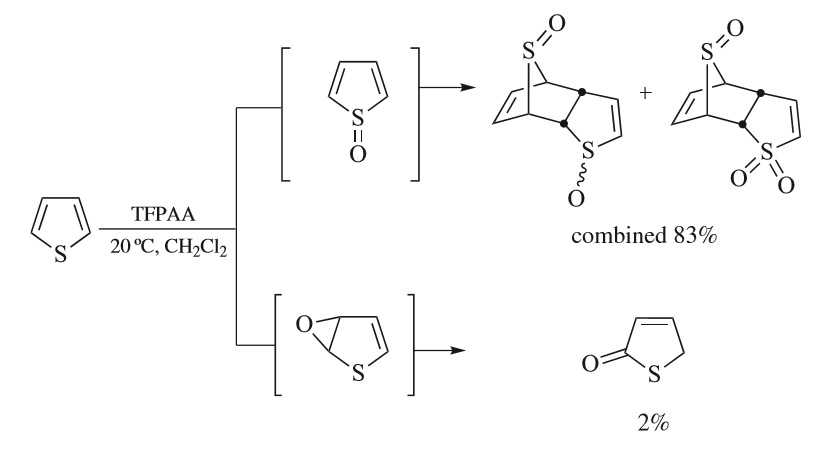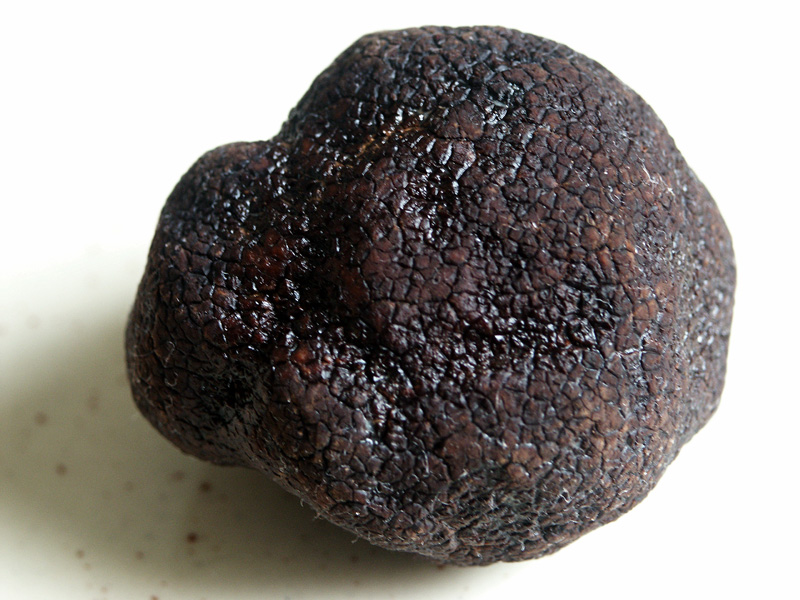|
2,3-Dihydrothiophene
2,3-Dihydrothiophene is a heterocyclic compound and an organosulfur compound with the formula SC4H6. It is isomeric with the more symmetrical 2,5-dihydrothiophene. Both isomers of dihydrothiophene are colorless liquids with a thioether-like odor. In terms of their reactivity, both isomers exhibit characteristics of alkenes and thioethers, undergoing addition reactions at carbon and oxidation at sulfur. In contrast, thiophene engages in neither reaction. Dihydrothiophenes in nature Dihydrothiophenes contribute to the aroma of the white truffle A truffle is the fruiting body of a subterranean ascomycete fungus, predominantly one of the many species of the genus ''Tuber''. In addition to ''Tuber'', many other genera of fungi are classified as truffles including ''Geopora'', ''Peziz .... The major component is 3-methyl-4,5-dihydrothiophene (alternative name:4-methyl-2,3-dihydrothiophene), produced by bacterial colonies in the truffle's fruiting bodies. References Sulfu ... [...More Info...] [...Related Items...] OR: [Wikipedia] [Google] [Baidu] |
Dihydrothiophene
Dihydrothiophenes are heterocyclic organosulfur compounds. Two isomers are possible for the parent C4H6S:{{cite journal, author=Shvekhgeimer, M. G. A., title=Dihydrothiophenes. Synthesis and Properties (review), journal= Chemistry of Heterocyclic Compounds, year=1998, volume=34, pages=1101-1122, doi=10.1007/BF02319487 * 2,3-Dihydrothiophene, a vinyl thioether. CAS RN A CAS Registry Number (also referred to as CAS RN or informally CAS Number) is a unique identifier, unique identification number assigned by the Chemical Abstracts Service (CAS), US to every chemical substance described in the open scientific li ... = 1120-59-8. * 2,5-Dihydrothiophene, an allylic thioether. A well-known derivative is 2,5-dihydrothiophene 1,1-dioxide. CAS RN = 1708-32-3. Depending on the substituents, some dihydrothiophenes are called 4,5-dihydrothiophenes. References Sulfur heterocycles ... [...More Info...] [...Related Items...] OR: [Wikipedia] [Google] [Baidu] |
Heterocyclic Compound
A heterocyclic compound or ring structure is a cyclic compound that has atoms of at least two different elements as members of its ring(s). Heterocyclic chemistry is the branch of organic chemistry dealing with the synthesis, properties, and applications of these heterocycles. Examples of heterocyclic compounds include all of the nucleic acids, the majority of drugs, most biomass (cellulose and related materials), and many natural and synthetic dyes. More than half of known compounds are heterocycles. 59% of US FDA-approved drugs contain nitrogen heterocycles. Classification The study of heterocyclic chemistry focuses especially on unsaturated derivatives, and the preponderance of work and applications involves unstrained 5- and 6-membered rings. Included are pyridine, thiophene, pyrrole, and furan. Another large class of heterocycles refers to those fused to benzene rings. For example, the fused benzene derivatives of pyridine, thiophene, pyrrole, and furan are quinol ... [...More Info...] [...Related Items...] OR: [Wikipedia] [Google] [Baidu] |
Organosulfur Compound
Organosulfur compounds are organic compounds that contain sulfur. They are often associated with foul odors, but many of the sweetest compounds known are organosulfur derivatives, e.g., saccharin. Nature abounds with organosulfur compounds—sulfur is vital for life. Of the 20 common amino acids, two ( cysteine and methionine) are organosulfur compounds, and the antibiotics penicillin and sulfa drugs both contain sulfur. While sulfur-containing antibiotics save many lives, sulfur mustard is a deadly chemical warfare agent. Fossil fuels, coal, petroleum, and natural gas, which are derived from ancient organisms, necessarily contain organosulfur compounds, the removal of which is a major focus of oil refineries. Sulfur shares the chalcogen group with oxygen, selenium, and tellurium, and it is expected that organosulfur compounds have similarities with carbon–oxygen, carbon–selenium, and carbon–tellurium compounds. A classical chemical test for the detection of sulfur co ... [...More Info...] [...Related Items...] OR: [Wikipedia] [Google] [Baidu] |
Alkene
In organic chemistry, an alkene is a hydrocarbon containing a carbon–carbon double bond. Alkene is often used as synonym of olefin, that is, any hydrocarbon containing one or more double bonds.H. Stephen Stoker (2015): General, Organic, and Biological Chemistry'. 1232 pages. Two general types of monoalkenes are distinguished: terminal and internal. Also called α-olefins, terminal alkenes are more useful. However, the International Union of Pure and Applied Chemistry (IUPAC) recommends using the name "alkene" only for acyclic hydrocarbons with just one double bond; alkadiene, alkatriene, etc., or polyene for acyclic hydrocarbons with two or more double bonds; cycloalkene, cycloalkadiene, etc. for cyclic ones; and "olefin" for the general class – cyclic or acyclic, with one or more double bonds. Acyclic alkenes, with only one double bond and no other functional groups (also known as mono-enes) form a homologous series of hydrocarbons with the general formula with '' ... [...More Info...] [...Related Items...] OR: [Wikipedia] [Google] [Baidu] |
Thioether
In organic chemistry, an organic sulfide (British English sulphide) or thioether is an organosulfur functional group with the connectivity as shown on right. Like many other sulfur-containing compounds, volatile sulfides have foul odors. A sulfide is similar to an ether except that it contains a sulfur atom in place of the oxygen. The grouping of oxygen and sulfur in the periodic table suggests that the chemical properties of ethers and sulfides are somewhat similar, though the extent to which this is true in practice varies depending on the application. Nomenclature Sulfides are sometimes called thioethers, especially in the old literature. The two organic substituents are indicated by the prefixes. (CH3)2S is called dimethylsulfide. Some sulfides are named by modifying the common name for the corresponding ether. For example, C6H5SCH3 is methyl phenyl sulfide, but is more commonly called thioanisole, since its structure is related to that for anisole, C6H5OCH3. The modern sy ... [...More Info...] [...Related Items...] OR: [Wikipedia] [Google] [Baidu] |
Thiophene
Thiophene is a heterocyclic compound with the formula C4H4S. Consisting of a planar five-membered ring, it is aromatic as indicated by its extensive substitution reactions. It is a colorless liquid with a benzene-like odor. In most of its reactions, it resembles benzene. Compounds analogous to thiophene include furan (C4H4O), selenophene (C4H4Se) and pyrrole (C4H4NH), which each vary by the heteroatom in the ring. Isolation and occurrence Thiophene was discovered as a contaminant in benzene. It was observed that isatin (an indole) forms a blue dye if it is mixed with sulfuric acid and crude benzene. The formation of the blue indophenin had long been believed to be a reaction of benzene itself. Viktor Meyer was able to isolate thiophene as the actual substance responsible for this reaction. Thiophene and especially its derivatives occur in petroleum, sometimes in concentrations up to 1–3%. The thiophenic content of oil and coal is removed via the hydrodesulfurization (HDS) ... [...More Info...] [...Related Items...] OR: [Wikipedia] [Google] [Baidu] |
Truffle
A truffle is the fruiting body of a subterranean ascomycete fungus, predominantly one of the many species of the genus ''Tuber''. In addition to ''Tuber'', many other genera of fungi are classified as truffles including ''Geopora'', ''Peziza'', ''Choiromyces'', ''Leucangium'', and over a hundred others. These genera belong to the class Pezizomycetes and the Pezizales order. Several truffle-like basidiomycetes are excluded from Pezizales, including ''Rhizopogon'' and ''Glomus''. Truffles are ectomycorrhizal fungi, so they are usually found in close association with tree roots. Spore dispersal is accomplished through fungivores, animals that eat fungi. These fungi have significant ecological roles in nutrient cycling and drought tolerance. Some truffle species are highly prized as food. French gastronome Jean Anthelme Brillat-Savarin called truffles "the diamond of the kitchen". Edible truffles are used in Italian, French and numerous other national . Truffles are cultivat ... [...More Info...] [...Related Items...] OR: [Wikipedia] [Google] [Baidu] |



